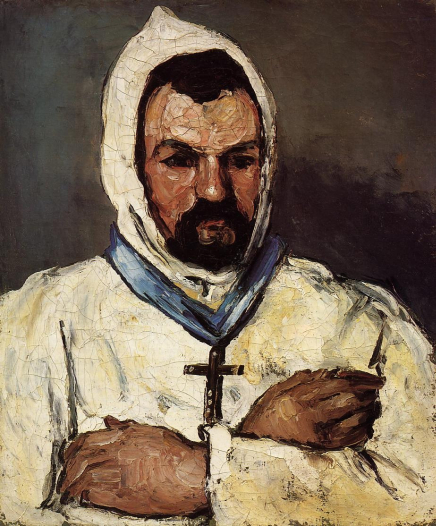 Early in his career, Paul Cezanne (1839-1906) painted a number of portraits of his mother’s brother. This painting, entitled Uncle Dominique as a Monk portrays the artist’s uncle in a Dominican habit. Dominique Aubert was not a monk; his nephew simply asked him to wear the habit for this painting. This painting is an important work of Cezanne’s for a number of reasons.
Early in his career, Paul Cezanne (1839-1906) painted a number of portraits of his mother’s brother. This painting, entitled Uncle Dominique as a Monk portrays the artist’s uncle in a Dominican habit. Dominique Aubert was not a monk; his nephew simply asked him to wear the habit for this painting. This painting is an important work of Cezanne’s for a number of reasons.
When it was painted in the fall of 1866, Cezanne was still in his “dark period”. Between 1861 and 1870, Cezanne tended to paint in dark colors and used black heavily. Inspired by Courbet, Cezanne painted a series of paintings, mostly portraits, with a palette knife. Even a photograph of this painting shows the valleys and almost gouges the angry young Cezanne scraped into the paint. Cezanne described these works as ostentatious. Sir Lawrence Gowing, organizer of a traveling exhibition of Cezanne’s work and well-known British artist, said of Cezanne’s palette knife work that is was the “invention of modern expressionism.”
Cezanne’s dark period was not accepted within the group of young Impressionists that took part in the Salon des Refuses but was definitely influenced by their work. He was a participant of the Refuses in 1863. The official Paris Salon rejected his submissions between 1864 and 1869. Another family portrait, Portrait of Loius-Auguste Cezanne, Father of the Artist would be his first and only work accepted to the Salon.
To learn more about this famous French artist and to see more examples of the work, be sure to visit our Paul Cezanne biography.